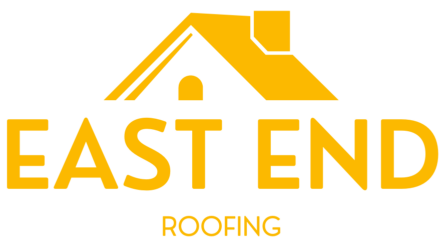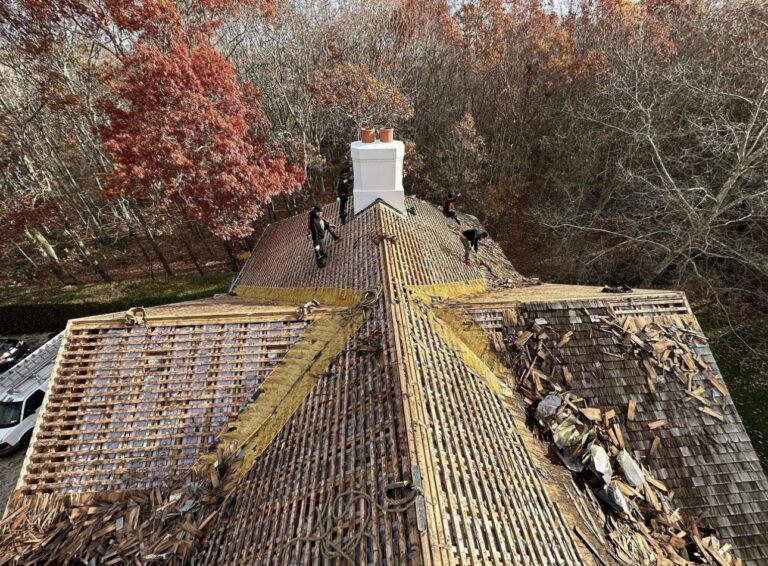When it comes to roofing, a poor installation job can lead to a range of issues that compromise both the integrity and lifespan of your roof. Recognizing the signs of poor roof installation to watch for on Long Island is crucial for homeowners looking to protect their property and ensure their roofing system is functioning properly. Roof installation is a significant investment, and you want to be sure that the work is done right the first time. Identifying issues early on can save you money in repairs and prevent major damage from occurring. Below are some signs that suggest your roof installation may not have been done properly.
Uneven Rooflines and Sagging Roofs
One of the most noticeable signs of poor roof installation is an uneven or sagging roofline. A roof that is not installed correctly can cause the structure to settle improperly, leading to uneven slopes. Over time, this can result in the roof bowing or sagging under its own weight. On Long Island, where heavy snowfalls and strong storms are not uncommon, a sagging roof can be particularly problematic. If you notice any visible dips or inconsistencies in the roofline, it’s important to have a professional roofer assess the situation as soon as possible.
Sagging can also be a result of incorrect installation techniques, such as improper support from the rafters or trusses. If your roof is sagging, it could be a sign that the materials were not installed with the right support or that the wrong materials were used. This can create long-term issues that may require costly repairs or even a complete replacement of the roof.
Improper Flashing Installation
Flashing plays a critical role in protecting your roof from water damage. Flashing is installed around areas like chimneys, vents, and skylights to prevent water from seeping into the roof structure. If flashing is not installed properly, it can lead to leaks, water damage, and even mold growth. One of the most common signs of poor roof installation to watch for on Long Island is missing or improperly installed flashing. If the flashing is not correctly sealed or has gaps, water can infiltrate the roof and cause significant damage to the underlying structure.
Additionally, if you notice any rusting or corrosion around the flashing, this may be another indication of poor installation. Flashing that becomes corroded over time could indicate that the materials used were not of high quality, or that the installation was done hastily without proper attention to detail. Either way, it’s a red flag that should not be ignored.
Inconsistent Shingle Alignment and Gaps
Another clear sign of poor roof installation is the presence of inconsistent shingle alignment or noticeable gaps between shingles. Shingles should be installed in uniform rows to provide a clean and professional appearance. If you notice that your shingles are misaligned or crooked, it’s likely that they were not installed correctly. This can also lead to areas where the shingles don’t properly overlap, which can result in water entering the roof and causing damage over time.
Gaps between shingles are also a serious concern. These gaps allow moisture to penetrate the roof, which can lead to rotting, mold growth, and a weakened structure. Gaps can also be a sign that the shingles were not properly nailed in place or that the roofing crew did not take the time to ensure the shingles were securely fastened. Either way, if you see gaps, it’s important to have a roofing professional inspect the installation and make the necessary adjustments.
Visible Nail Pops
Another warning sign of poor roof installation is the presence of nail pops. A nail pop occurs when the roofing nails used to secure the shingles begin to protrude through the surface of the shingles, causing visible bumps or indentations. This can happen if the nails were not driven deep enough into the decking, or if the wrong type of nails were used during installation.
Nail pops are a common issue in improperly installed roofs, and they can lead to leaks and further damage over time. If you notice any nail pops on your roof, it’s important to have them fixed immediately to prevent further damage to the roofing system. Over time, these imperfections can allow water to seep into the roof and cause rot or mold growth.
Excessive Granule Loss
Shingle granules are small, rough particles that cover the surface of asphalt shingles to provide protection against the sun’s ultraviolet rays and help prevent premature wear and tear. Over time, it’s normal for some granules to wear off, but excessive granule loss is a sign of poor roof installation or the use of inferior materials. If you notice large amounts of granules in your gutters or around the base of your home, it could indicate that the shingles are not of the highest quality or that they were not installed properly.
Excessive granule loss can also lead to a reduction in the shingle’s ability to protect the roof from UV rays, ultimately shortening the lifespan of your roof. If you see signs of excessive granule loss, it’s essential to consult with a professional roofer who can evaluate the shingles and determine whether replacement is necessary.
Poor Ventilation
Roof ventilation is an essential aspect of roof installation, especially on Long Island, where temperatures can fluctuate significantly between seasons. Proper ventilation helps regulate temperature and moisture levels within the attic, preventing condensation, mold growth, and heat buildup. Without adequate ventilation, your roof can suffer from excess moisture, which can lead to rotting wood, mold, and other serious structural problems.
Signs of poor ventilation can include mold growth in your attic, increased energy bills due to inadequate temperature regulation, or visible damage to the roof decking. If you suspect that your roof is not properly ventilated, it’s important to have a professional roofing contractor assess the situation and make the necessary corrections.
Cracked or Damaged Shingles
One of the most obvious signs of poor roof installation is cracked or damaged shingles. Shingles should be able to withstand normal weather conditions, including wind, rain, and snow, without cracking or breaking. If you notice that your shingles are cracking, breaking, or lifting, it could be a sign that they were not installed correctly or that subpar materials were used during the installation.
Cracked or damaged shingles can leave your roof vulnerable to leaks and water damage. If left unaddressed, this can lead to more serious issues, such as structural damage or mold growth. If you spot any damaged shingles, it’s crucial to replace them as soon as possible to protect the rest of the roof from further damage.
Inadequate Underlayment Installation
The underlayment of your roof plays a key role in providing an extra layer of protection against water infiltration. This material is installed beneath the shingles and acts as a barrier to moisture, helping to prevent leaks and water damage. If the underlayment was not installed properly or is missing in certain areas, it can significantly reduce the effectiveness of your roofing system.
Signs of inadequate underlayment installation include visible areas of missing shingles or uneven coverage beneath the roof’s surface. These areas can allow water to seep through and cause damage to the underlying layers of the roof. If you suspect that your roof’s underlayment was installed improperly, it’s important to contact a professional roofer for a full inspection.
Conclusion
If you notice any of these signs of poor roof installation to watch for on Long Island, it’s important to take action as soon as possible. Addressing these issues early on can save you money in the long run and prevent more extensive damage to your roof and home. A poorly installed roof can lead to significant problems, including leaks, mold growth, and structural damage. To ensure your roof is installed properly, always hire a reputable and experienced roofing contractor who understands the unique needs of Long Island homeowners.
Don’t wait until your roof issues worsen. Contact East End Roofing today to schedule a comprehensive roof inspection and make sure your roof is in top condition. Our experienced team is here to provide you with the best roofing solutions available on Long Island. Call us now at (631) 855-2006 or email us at In**@***********NY.com to learn more and schedule your consultation.

